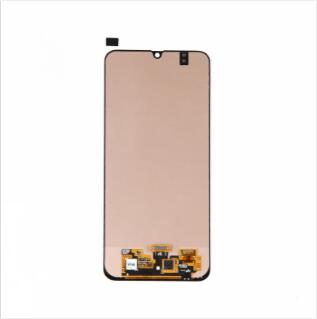Exploring Common LCD Screen Technologies in Cell Phones
2024-09-09
Cell phone screens have come a long way in terms of clarity, color vibrancy, and overall display quality. The LCD (Liquid Crystal Display) technology is one of the most widely used in smartphones, known for its cost-effectiveness and solid performance. However, not all LCD screens are created equal. Various types of LCD technologies offer distinct advantages and are designed for specific uses.
In this blog, we'll dive into the common types of LCD screen technologies used in cell phones, their key features, and how they impact your smartphone experience.
1. TFT LCD (Thin-Film Transistor)
TFT LCD is one of the most common types of LCD technology used in smartphones, especially in budget models. It’s an active matrix display that uses thin-film transistors to control each individual pixel on the screen. This results in sharper images and faster response times compared to older passive-matrix LCDs.
Key Features:
- Cost-Effective: TFT LCDs are relatively inexpensive to manufacture, which is why they are widely used in entry-level and mid-range smartphones.
- Good Image Quality: While TFT LCDs don’t offer the highest image quality, they provide decent resolution, contrast, and brightness for everyday tasks.
- Limited Viewing Angles: One downside of TFT displays is their limited viewing angles. When viewed from an angle, colors may appear distorted or washed out.
- Higher Power Consumption: Compared to other LCD technologies, TFT tends to consume more power, which can impact battery life.
Where You’ll Find It: TFT LCDs are commonly found in budget smartphones or devices where the focus is on affordability rather than display quality.
2. IPS LCD (In-Plane Switching)
IPS LCDs are an improvement over traditional TFT displays and have become the standard for most mid-range to high-end smartphones. IPS technology arranges and switches the orientation of liquid crystals within the plane of the display, allowing for better color reproduction and wider viewing angles.
Key Features:
- Wide Viewing Angles: One of the biggest advantages of IPS technology is that it maintains color accuracy and contrast even when viewed from extreme angles.
- Better Color Accuracy: IPS LCDs offer richer, more vibrant colors compared to TFT screens, making them ideal for watching videos, gaming, and browsing.
- Higher Brightness Levels: IPS displays can produce brighter images, making them easier to view in direct sunlight or outdoor environments.
- Moderate Power Consumption: IPS panels are more energy-efficient than TFT displays but still consume more power compared to OLED technologies.
Where You’ll Find It: IPS LCDs are common in mid-range to high-end smartphones, where better color reproduction and wider viewing angles are essential.
3. Super LCD (S-LCD)
Super LCD (S-LCD) is a variant of the standard LCD, developed to provide an improved viewing experience and reduce the common drawbacks of traditional LCD panels. It offers better visibility in bright light and consumes less power than standard LCDs, making it more battery-friendly.
Key Features:
- No Air Gap: In S-LCD displays, there is no air gap between the outer glass and the display panel. This reduces glare and improves visibility, especially in outdoor lighting.
- Enhanced Brightness and Contrast: S-LCD screens provide better brightness and contrast compared to standard LCDs, although they may not reach the same levels as OLED displays.
- Battery Efficiency: Super LCD panels are more energy-efficient than TFT LCDs, providing better battery life.
Where You’ll Find It: S-LCD displays are often found in high-end smartphones from brands that prioritize reducing glare and enhancing outdoor visibility.
4. LTPS LCD (Low-Temperature Polycrystalline Silicon)
LTPS LCD is an advanced form of LCD technology that allows for better pixel density, making it ideal for high-resolution displays. It uses a different material for the thin-film transistors, which enables faster electron mobility and improves display performance.
Key Features:
- High Pixel Density: LTPS displays can support very high resolutions (up to Quad HD or more), making them perfect for flagship smartphones with crisp, detailed visuals.
- Improved Brightness and Color: These displays offer improved brightness, color accuracy, and response times compared to traditional LCDs.
- Power Efficiency: LTPS LCDs consume less power than standard TFT or IPS displays, contributing to better battery life in smartphones.
Where You’ll Find It: LTPS LCD technology is commonly found in high-end smartphones with ultra-high-resolution displays.
Conclusion:
Understanding the different types of LCD screen technologies can help you make an informed decision when purchasing a smartphone. TFT LCDs are affordable but may compromise on viewing angles and power consumption, while IPS and LTPS technologies offer superior color accuracy and power efficiency. Meanwhile, Super LCD reduces glare and improves outdoor visibility, making it a strong contender for users who spend time in bright environments. The right display for you depends on your priorities, whether it’s cost, color accuracy, or battery life.



